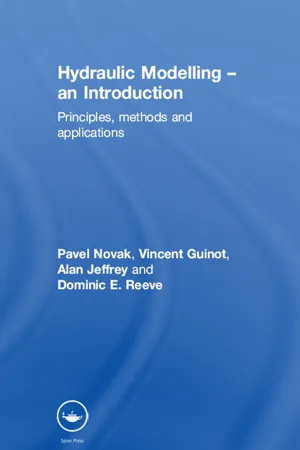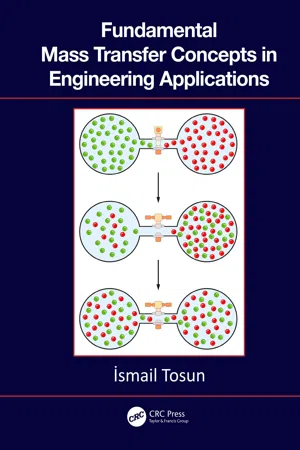Exact Differential Equation
An exact differential equation is a type of differential equation where the total differential of a function can be expressed as a combination of the differentials of its variables. This means that the equation can be solved by finding a function whose total differential matches the given equation. Exact differential equations are important in engineering and physics for modeling various physical phenomena.
6 Key excerpts on "Exact Differential Equation"
- eBook - ePub
- Frank J. Fabozzi, Frank J. Fabozzi(Authors)
- 2012(Publication Date)
- Wiley(Publisher)
...This entry provides only a brief introduction to the concept of differential equations and their properties, limiting our discussion to the principal concepts. We do not cover stochastic differential equations. DIFFERENTIAL EQUATIONS DEFINED A differential equation is a condition expressed as a functional link between one or more functions and their derivatives. It is expressed as an equation (that is, as an equality between two terms). A solution of a differential equation is a function that satisfies the given condition. For example, the condition equates to zero a linear relationship between an unknown function Y (x), its first and second derivatives Y ′(x),Y ′′(x), and a known function b (x). (In some equations we will denote the first and second derivatives by a single and double prime, respectively.) The unknown function Y (x) is the solution of the equation that is to be determined. There are two broad types of differential equations: ordinary differential equations and partial differential equations. Ordinary differential equations are equations or systems of equations involving only one independent variable. Another way of saying this is that ordinary differential equations involve only total derivatives. In contrast, partial differential equations are differential equations or systems of equations involving partial derivatives. That is, there is more than one independent variable. ORDINARY DIFFERENTIAL EQUATIONS In full generality, an ordinary differential equation (ODE) can be expressed as the following relationship: where Y (m) (x) denotes the m -th derivative of an unknown function Y (x). If the equation can be solved for the n -th derivative, it can be put in the form: Order and Degree of an ODE A differential equation is classified in terms of its order and its degree. The order of a differential equation is the order of the highest derivative in the equation...
- F. Xavier Malcata(Author)
- 2020(Publication Date)
- Wiley(Publisher)
...15 Solution of Differential Equations Any equation containing differential coefficients is termed differential equation. Such equations can be divided into two major types – ordinary and partial; said classification depends on whether they encompass algebraic operations, lumped in f, on a single independent variable – and thus only ordinary derivatives appear as coefficients, i.e. f { x, y, dy / dx, d 2 y / dx 2, … } = 0, or more than one independent variable – so partial derivatives play the role of independent coefficients, e.g. f { x, y, z, ∂z / ∂x, ∂z / ∂y, ∂ 2 z / ∂x 2, ∂ 2 z / ∂x∂y, ∂ 2 z / ∂y 2, …} = 0 in the bivariate case. When a differential equation contains no terms on its independent variable(s) only, it is said to be homogeneous – otherwise it is labeled as nonhomogeneous; solutions for the latter may often be obtained using the corresponding homogeneous solution as template. The order of a differential equation is the order of the highest differential coefficient contained therein; the degree of a differential equation is the power to which the highest order differential coefficient is raised when the equation is rationalized (i.e. following removal of fractional powers). The general solution of a typical partial differential equation is a combination of arbitrary functions of specific arguments; their exact form is to be determined by application of boundary (and/or initial) conditions – dependent on the nature of the system/process under scrutiny. Conversely, the general solution of an ordinary differential equation contains as many specific independent functions (each one multiplied by an arbitrary constant) as its order. The most common methods of analytical solution, via integration, will be reviewed below. 15.1 Ordinary Differential Equations A differential equation is said to be linear when it is linear in the dependent variable and its derivatives – otherwise it is said to be nonlinear...
- eBook - ePub
- Arsen Melkumian(Author)
- 2012(Publication Date)
- Routledge(Publisher)
...12 Difference and differential equations Many economic processes demonstrate dynamic behavior. However, in some of these cases, the underlying system is guided by rather simple relationships between quantities and their rates of change. Whenever we have a relationship between functions and their derivatives or rates of change, we essentially deal with differential or difference equations. For functions of continuous variables, we consider differential equations. For quantities dependent on a discrete variable, we talk about difference equations. Consider an economic process developing in time. Most likely the functions involved in the process will depend on their previous values. For instance, the current supply depends on the demand we observed a week, a month or a year ago. Whenever we have a relationship involving quantities at time t and their previous values at times t − 1, t − 2, and so on, we implicitly deal with a mathematical structure known as a difference equation. This chapter begins with the mathematical theory of such equations, considers some applications of difference equations to economic problems, and closes with differential equations. 12.1 Difference equations 12.1.1 Linear first-order difference equations A linear first-order difference equation may be written as follows: where For example, the equation is a linear first-order difference equation. Alternatively, the first-order difference equation in (12.1) may be written in the form: If and are constants, then we can write equation (12.3) as follows: where b and c are some constants. The difference equation is known as a first-order difference equation with constant coefficients...
- eBook - ePub
Ultra Wideband Antennas
Design, Methodologies, and Performance
- Giselle M. Galvan-Tejada, Marco Antonio Peyrot-Solis, Hildeberto Jardón Aguilar(Authors)
- 2017(Publication Date)
- CRC Press(Publisher)
...Appendix B Some Concepts Related to Differential Equations Contents B.1 Generalities B.2 Order B.3 Differential Equation Systems B.4 Initial and Boundary Value Conditions B.5 Existence and Uniqueness B.1 Generalities Differential equations are used to model the variation of one quantity as a function of another one (or more than one). When the differential equation presents one or more variables which depend on only one parameter, it is said it is an ordinary differential equation, otherwise we are addressing partial differential equations. For example, m d 2 x d t 2 = F (B.1) ∂ 2 u ∂ x 2 + ∂ 2 u ∂ y 2 = 0 (B.2) In the case of Equation (B.1), Newton’s law for the position x (t) of a particle acted on by a force F, we can see how there is a variation of the distance, x, as a function of time, t (i.e., a velocity), and there is not any other independent variable. Hence this equation is an example of an ordinary differential equation. On the other hand, Equation (B.2), corresponding to the Laplace’s or the potential equation, presents the potential u as a function of two spatial variables, which means that u = u (x, y) and therefore it is a partial differential equation. B.2 Order The order of an ordinary or partial differential equation is the order of the highest derivative that appears in the equation. Thus, for example Equation (B.1) is a second order ordinary equation. B.3 Differential Equation Systems When a problem is described by more than one differential equation (either ordinary or partial and of any order), it is said that we have a system of differential equations. A classical example is the set of partial differential equations formulated by Maxwell and presented in Chapter 9 : ∇ × E + μ 0 ∂ H ∂ t = 0 (B.3) ∇ × H − ε 0 ∂ E ∂ t = J (B.4) ∇ ⋅ ε 0 E = ρ (B.5) ∇ ⋅ μ 0 H = 0 (B.6) where E represents the electrical field, H the magnetic field, ε 0 is the permittivity of vacuum, and µ 0 is the permeability of vacuum...
- eBook - ePub
Hydraulic Modelling: An Introduction
Principles, Methods and Applications
- Pavel Novak, Vincent Guinot, Alan Jeffrey, Dominic E. Reeve(Authors)
- 2018(Publication Date)
- CRC Press(Publisher)
...Chapter 2 Theoretical background – mathematics 2.1 Ordinary differential equations 2.1.1 Definitions Physical situations described by quantities that vary continuously with respect to their position in space and possibly with time can usually be described in terms of systems of partial differential equations (PDEs). These are equations that relate the quantities involved to some of their derivatives with respect to space variables and time. In the simplest case, when only a single quantity u (t) depending on a variable t is involved, the variation of u (t) with respect to t is described by an ordinary differential equation (ODE) that relates u (t) to some of its derivatives. If the highest order derivative involved in an ODE is d n u /d t n, the ODE is said to be of the nth order. The variable t is called the independent variable, and in physical situations t is often the time, while the quantity u (t) is called the dependent variable because its value depends on t. A general nth-order ODE can be written symbolically as F (t, u, u ′, u ″, … u (n)) = 0, (2.1) where u ′ = d u d t, u ″ = d 2 u d t 2 =, …, u (n) = d n u d t n, and F is an arbitrary function of its n + 1 arguments t, u, u′, u″, …,u (n). The form of equation (2.1) is too general to be of use when discussing ODEs, so in practice it is necessary to restrict study to some of the most frequently occurring types of ODE that arise in applications. This involves considering special forms that may be taken by the function F, although only the most important of these will be mentioned here. The simplest type of ODE is of the form d y / d t = g (y) h (t), where g (y) and h (t) are functions of their respective arguments. An ODE of this type is said to have separable variables, because it can be written as ∫ (1 g (y)) d y = ∫ h (t) d t, in which the variables y and t have been separated, after which the general solution follows by integration...
- Ismail Tosun(Author)
- 2019(Publication Date)
- CRC Press(Publisher)
...D Ordinary Differential Equations A differential equation containing ordinary derivatives is called an ordinary differential equation (ODE). The order of a differential equation is the order of the highest derivative in the equation. A differential equation is linear when (1) every dependent variable and every derivative involved occur to the first degree only and (2) neither products nor powers of dependent variables nor products of dependent variables with differentials exist. D.1 First-Order Odes First-order ODEs for which solutions may be obtained by analytical methods are classified as (1) separable equations, (2) exact equations, (3) homogeneous equations, (4) linear equations, and (5) Bernoulli equations. D.1.1 Separable Equation An equation of the form f 1 (x) g 1 (y) d x + f 2 (x) g 2 (y) d y = 0 (D.1) is called a separable equation. Dividing Eq. (D.1) by g 1 (y) f 2 (x) results in f 1 (x) f 2 (x) d x + g 2 (y) g 1 (y) d y = 0 (D.2) Integration of Eq. (D.2) gives ∫ f 1 (x) f 2 (x) d x + ∫ g 2 (y) g 1 (y) d y = C, (D.3) where C is an integration constant. D.1.2 Exact Equation The expression M (x, y) dx + N (x, y) dy is called an exact differential 1 if there exists some ϕ = ϕ (x, y) for which this expression is replaced by the total differential dϕ (x,y),. i.e., M (x, y) d x + N (x, y) d y = d ϕ (x, y) (D.4) A necessary and sufficient condition for the expression M (x,y) dx + N (x,y) dy to be expressed as a total differential is that ∂ M (x, y) ∂ y = ∂ N (x, y) ∂ x (D.5) If M (x, y) dx + N (x, y) dy is an exact differential, then the differential. equation M (x, y) d x + N (x, y) d y = 0 (D.6) is called an Exact Differential Equation. Since an exact differential can be expressed in the form ofa total differential dϕ, then M (x, y) d x + N (x, y) d y = d ϕ (x, y) = 0 (D.7) and the solution can easily be obtained as ϕ (x, y) = C, (D.8) where C is a constant. D.1.3 Homogeneous Equation A...





